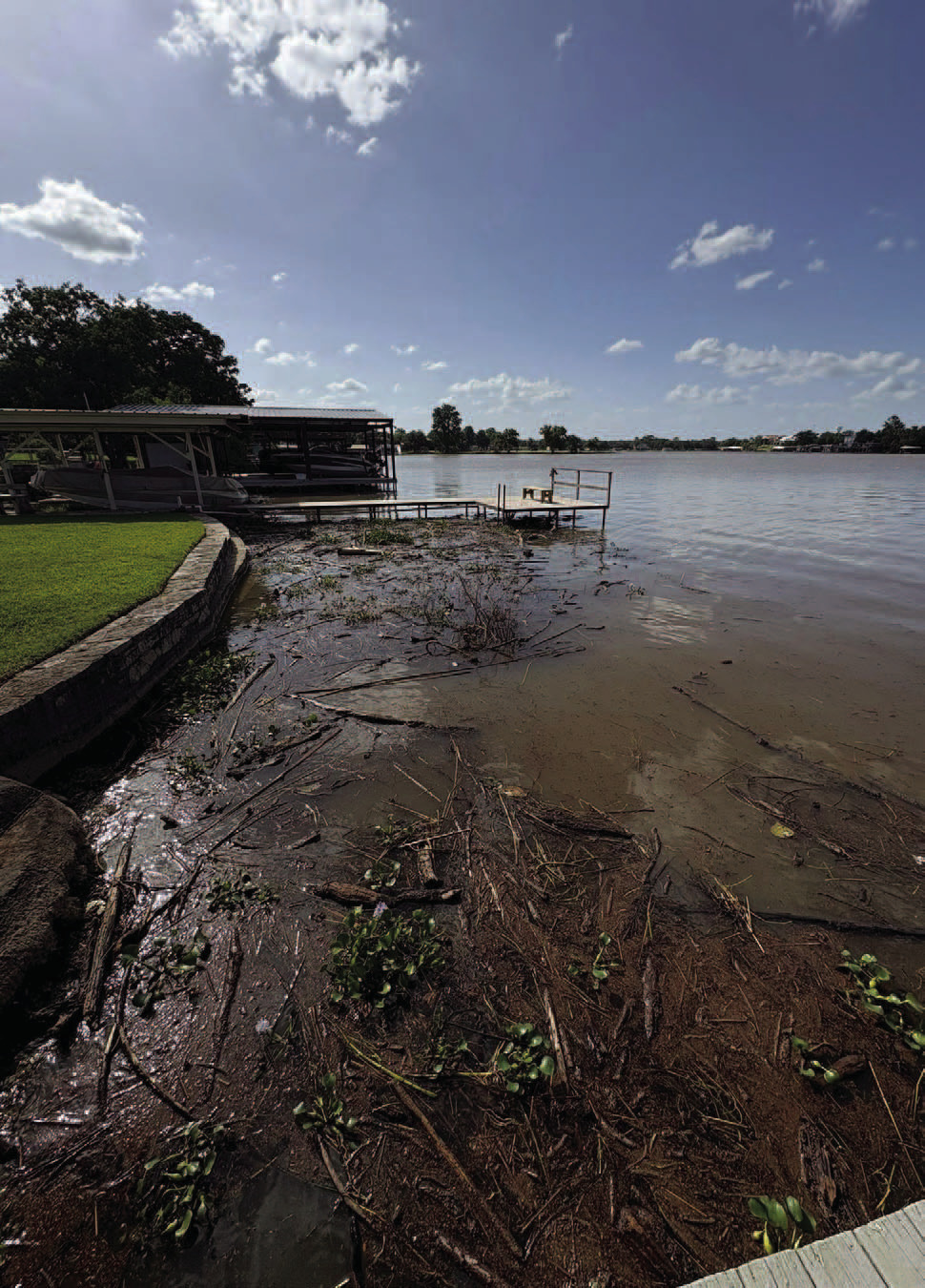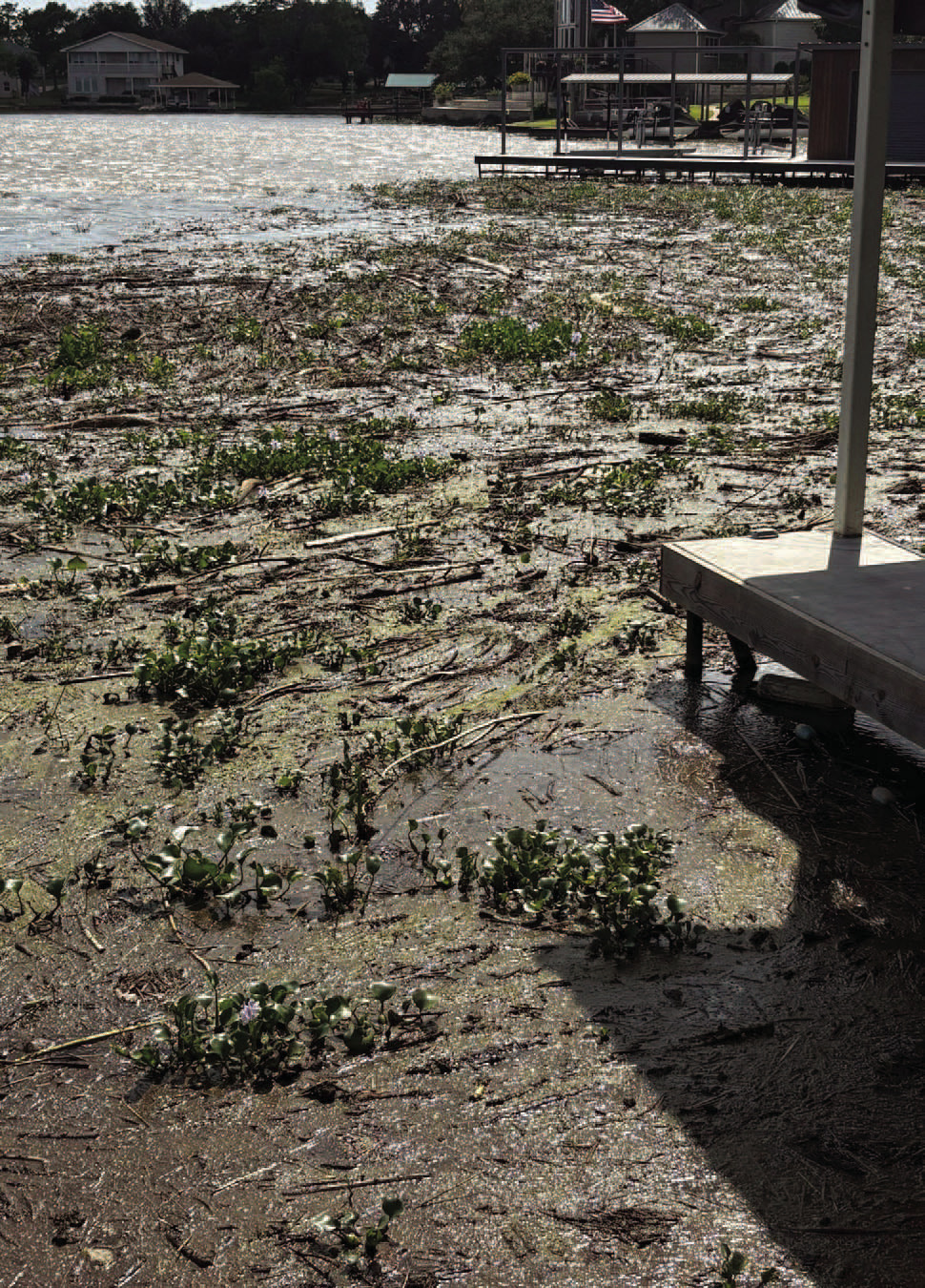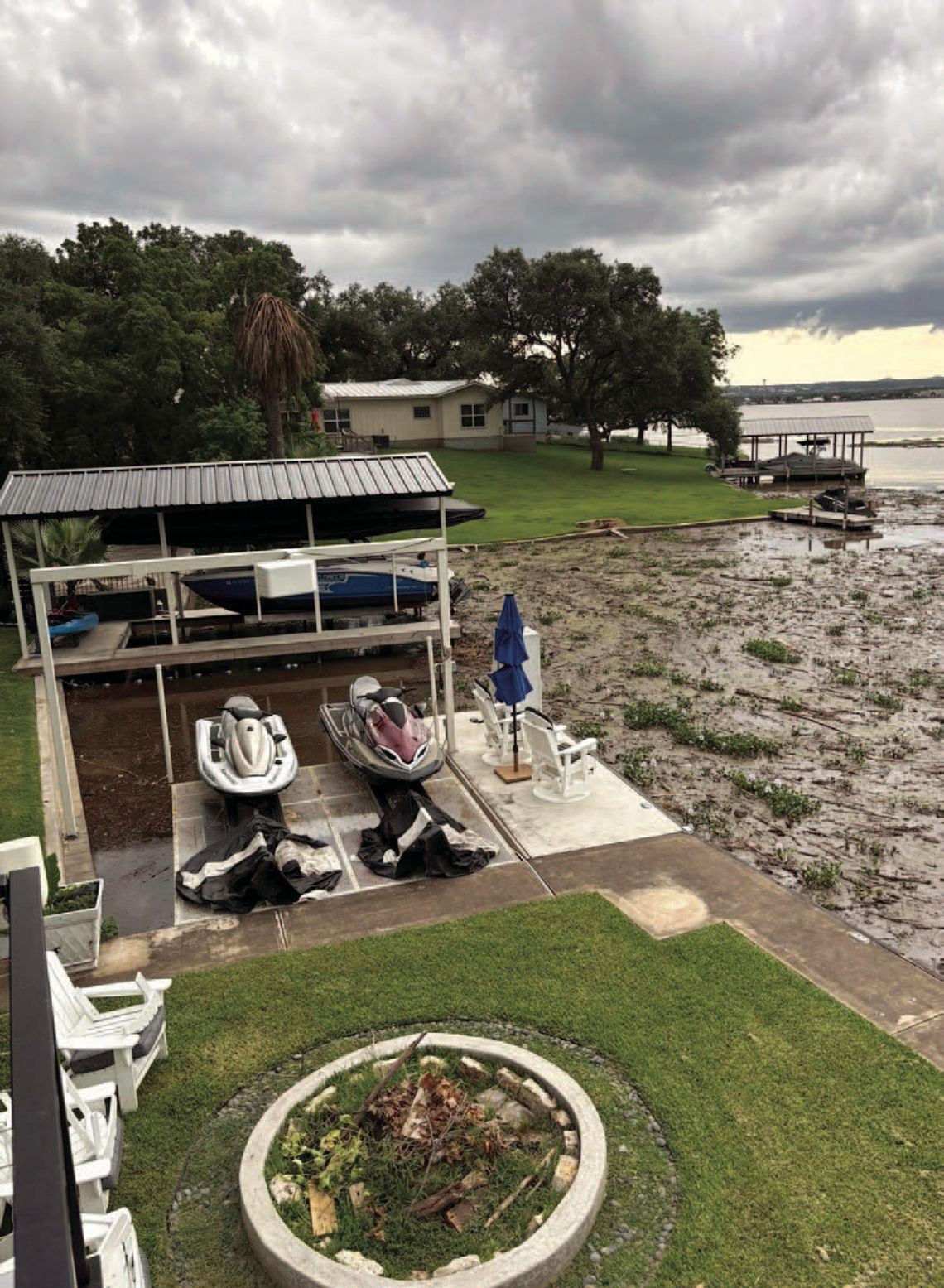A little more than a month after the Independence Day weekend flood event, lakeside property owners must still contend with lake debris in some coves, especially on Lake LBJ.
Officials with the Lower Colorado River Authority announced bacteria levels are returning to normal, however, those still visiting or playing in the lakes should consider a few precautions.
“The debris is getting better day by day, but you still need to keep an eye out and slow down,” said John Hofmann, LCRA executive vice president of Water, in a press release. “It’s absolutely not smart or safe to go full speed on the lakes under these conditions.
We expect conditions will continue to improve, but our advice is to remain cautious of debris for the foreseeable future.”
Lakeside residents are sharing images of large tree limbs, trash
Lake and muck carried in by July flooding, along with docks and boats that have yet to be set back into place.
Officials say water quality is considered “typical” of what is reported this time of year, but activities such as pets splashing around in the water could still pose a health risk for the animal.
“Flood-related bacteria levels have subsided,” Hofmann stated. “It’s important to remember these lakes are not chlorinated swimming pools, so there is always a risk of encountering bacteria or other microorganisms regardless of whether there’s been a recent flood.”
Avoid “floating algae mats” and be sure and rinse dogs with clean water if they happen to take a swim. Stirring up the lakebed in those areas can also cause more water quality issues. Beware of “cloudy, smelly or stagnant water” where bacteria is at its peak.
Safety tips can be found at lcra.org/belakewise. Officials advise
to:
• Always wear a life jacket on the Highland Lakes, which are now more than 100 feet deep in places;
• Be aware the bottoms of the lakes are uneven and covered with rocks and sometimes plant material.;
• Never swim alone and keep a close eye on every member of your group; and
• Plug your nose when jumping into the water to reduce potential exposure to the Naegleria fowleri amoeba.
For more information, visit www.lcra.org.















